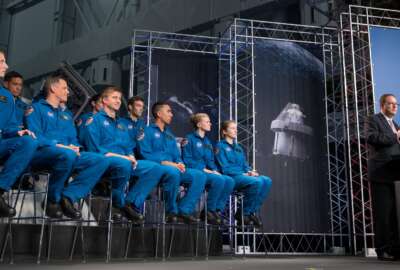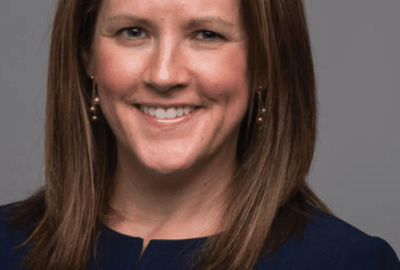
NASA’s Gibbs: Employee engagement needs honest conversations
NASA Chief Human Capital Officer Bob Gibbs said employee engagement starts with a plan, but really needs to happen organically across the agency.
When NASA Chief Human Capital Officer Bob Gibbs talks about why employee engagement has improved each of the past six years, he offers the typical platitudes.
Gibbs, who also is the assistant administrator for human capital, brings up senior leadership commitment. He brings up training. He says the space agency has a committed and passionate workforce.
Basically, Gibbs is offering the same reasons that nearly every other agency senior leader would point to as to why any program or project is successful.
But it’s when Gibbs talks about the culture of NASA — the idea that employees are encouraged to speak their minds because the mission of flight and space travel demand it — that may be the reason why NASA employee engagement scores on the Federal Employee Viewpoint Survey (FEVS) and their ranking on the Best Places to Work list from the Partnership for Public Service remain the government’s pace setter.

“One of the things that is unique about NASA is that willingness for supervisors to be open, transparent and willing to work with employees,” Gibbs said on the Courageous HR program. “Employees don’t hesitate to express their points of view pretty much to anyone in leadership or anyone across the agency. That is the culture. What is remarkable is there is an honest conversation about what is going on within the agency and our mission. You may not always like the answers, but that honest conversation helps us reinforce our commitment to engagement.”
NASA scored an 80.9 in the 2017 Best Places to Work rankings, up from 78.6 in 2016, to earn the top spot among large agencies. Under FEVS, NASA also earned the highest score among large agencies of 82 percent, well above the average score of 69 percent for others in their size class.
Gibbs, who came to NASA in May 2017 after spending the previous four years as the Energy Department’s CHCO, said employee engagement starts with a plan, but really needs to happen organically across the agency.
He said FEVS is a helpful starting point to understand the broad pain points or successes across an agency, but only through small group discussions can an organization create a set of actions to improve engagement.
“We have a pretty strong focus on leadership development, employee development and communications across the board,” Gibbs said. “I also would argue that communications start with listening. What we are hearing from employees not just through FEVs, but writ large across the agency and helps us understand our challenges.”
Gibbs said these small group discussions happen frequently but tend to be more ad hoc than planned by management. He said sometimes they address human resources challenges, but other times they are focused on technical problems or just a way to encourage collaboration.
NASA also has invested in the technology to promote engagement.
Gibbs said the agency hosts virtual executive summits where leaders have the opportunity to discuss challenges or goals.
He said NASA also just moved its learning management system to the cloud, which makes it easier to take courses from anywhere and provides cost savings. Additionally, the agency uses video teleconferencing to give and receive input as a way to ensure employees continually are engaged.
“We invest a lot in other tools. We have organization development folks who work to support leadership and solve problems at their lowest level, and make sure we are talking about the same sorts of things by having that constructive discussion,” Gibbs said. “One of the principles Robert Lightfoot, our acting administrator, pushes is assume positive intent. It sounds soft or squishy, but there is so much power in having that conversation and believing the other person you are talking to is having an honest conversation for the right reasons. If you put your mindset around that, it’s very helpful.”
Gibbs said NASA’s plans to continue to transform and improve the human resources processes tie back to the focus on increasing engagement.
“We have an established shared service center and we are looking to expand the things we do at the shared service center to be more efficient in the transactional end of our business so we can invest in the strategic partnering with the missions and centers to help make them successful,” he said. “For the transactional things, we will look to consolidate at one place in our shared service center. For the things that have to be done onsite, supporting the missions of the specific centers and headquarters, they are really different. I don’t see where we would be able to collapse everything into one place because of the diversity of mission.”
Gibbs said while NASA’s success is steeped in its culture of transparency and innovation, there are lessons other agencies can take from their experience.
“From a human resources perspective, the first thing you really have to know is your business inside and out, top to bottom. Know your costs. Know what your drivers are and know what your key performance indicators are all the way through business. Often when I have discussions with agencies as they are going forward through some measure of transformation, this is a step they have to take back and make sure they really understand where they are headed and why,” he said. “From an engagement perspective, it has to grow organically from your mission within your agency. There is no magic potion I can give you that worked at NASA and will work at your agency. The last thing I would say, it’s work. There is no way around this. It requires a lot of work and complete commitment from everyone at the agency to make this really successful.”
Copyright © 2025 Federal News Network. All rights reserved. This website is not intended for users located within the European Economic Area.
Jason Miller is executive editor of Federal News Network and directs news coverage on the people, policy and programs of the federal government.
Follow @jmillerWFED







